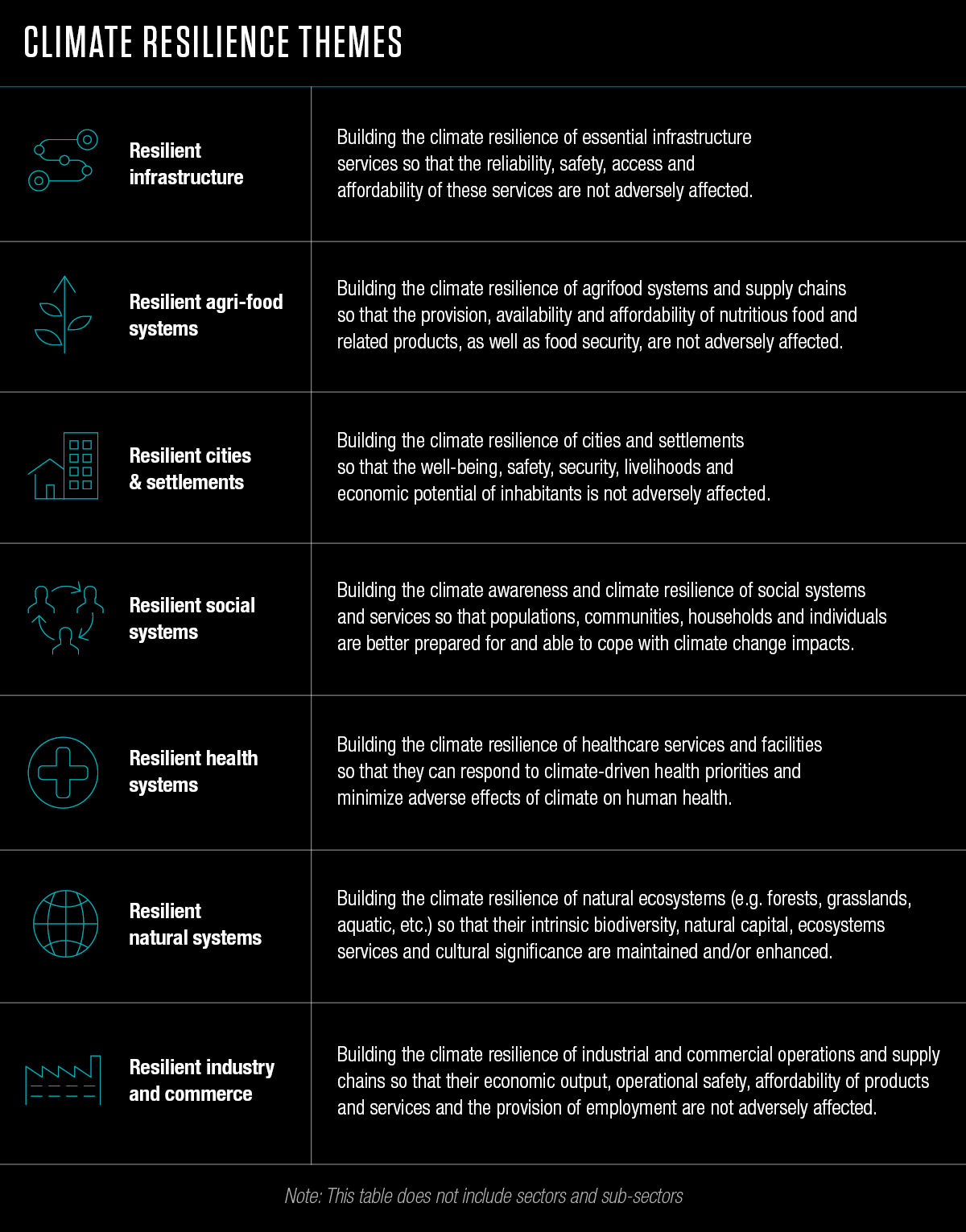The sustainable debt market has been helping to bridge the financing gap for climate action, with US$4 trillion mobilized annually through green, social, and sustainable bonds (GSS+).1 However, only 19% of these bonds address climate adaptation and resilience (A&R), as opposed to other forms of green and sustainable financing.2
That’s a problem because losses from weather-related catastrophes are increasing faster than global GDP.3 The annual costs from extreme weather events that can be attributed back to climate change has been estimated at approximately US$143 billion globally.4
The flooding in Spain in late October, which led to over 200 deaths, is one of many recent examples of climate-related destruction,5 though Asia is likely to be the region in the world that is hit hardest.6
Impactful A&R projects – such as initiatives to make sure essential infrastructure, food systems, and cities are resilient to climate-change related events – can save lives and protect assets. A study cited by the World Bank found an average of US$4 in benefits for every US$1 invested in climate-resilient infrastructure over an investment’s lifetime.7
The financial sector has a significant opportunity to direct more capital toward these investments. However, progress has been held back by the lack of a universal definition of climate resilience and the risk that a lack of transparency will lead to greenwashing, i.e. making unsubstantiated claims about an investment’s positive impact.
In response, the Climate Bonds Initiative (CBI) published its Climate Bonds Resilience Taxonomy (CBRT) in late September to help accelerate global capital flows into resilience investments.8 The taxonomy aims to provide clear definitions and criteria, as well as a common framework for identifying and developing impactful A&R projects.
WHY SHOULD FINANCIAL INSTITUTIONS ADOPT CBRT?
Financial institutions will play a crucial role in developing innovative financing instruments and leveraging new private sector financing sources to enhance climate resilience. By adopting or aligning with CBRT, they can:
HOW DOES CBRT WORK?
CBI identified a total of 1,444 A&R investments eligible for debt or other forms of financing under the framework of CBRT. These investments are categorized into ‘adapting’ and ‘enabling’ investments, using the following CBRT nomenclature:
The CBRT builds on definitions used by the EU Sustainable Finance Taxonomy/ Taxonomy Regulation and the Intergovernmental Panel on Climate Change – a UN body for assessing the science related to climate change – to offer the following screening criteria for climate resilient investments:10

WHAT ARE THE NEXT STEPS?
With the CBRT published, financial institutions should prepare themselves to take advantage of the new clarity over investing in climate resilience and adaptation.
First, they should take time to understand the CBRT principles and practices and then begin reviewing existing investments. The key goal should be to identify climate resilience projects within their portfolio that are in alignment with CBRT. This will allow institutions to tailor product offerings, such as investment funds, to meet investor and regulatory expectations.
Financial institutions will also want to enhance their sustainable finance framework to incorporate the CBRT, and integrate sustainable investment options and CBRT criteria into their risk assessment and decision-making processes.
Finally, institutions will need to invest in robust data management capabilities that allow them to better monitor climate resilience projects in their portfolio. This means prioritizing data collection, analysis, and reporting to measure and communicate the impact of sustainability-related activities including climate resilience.
These improvements will deliver increased transparency and will help institutions to meet the growing demand for accountability in sustainable finance. In particular, they will help provide credible information to clients and stakeholders as they address the critical challenge of making our world more resilient to climate change, including the rising number of extreme weather events.
To explore how your organization can gain a competitive advantage in the ever-evolving sustainable finance landscape, please contact us via the form below.
References
1 Climate Bonds Initiative
2 Climate Bonds Initiative
3 OECD
4 Nature Communications
5 BBC; Irish Times
6 United Nations
7 World Bank
8 Climate Bonds Initiative
9 World Bank/IFC
10 Climate Bonds Initiative